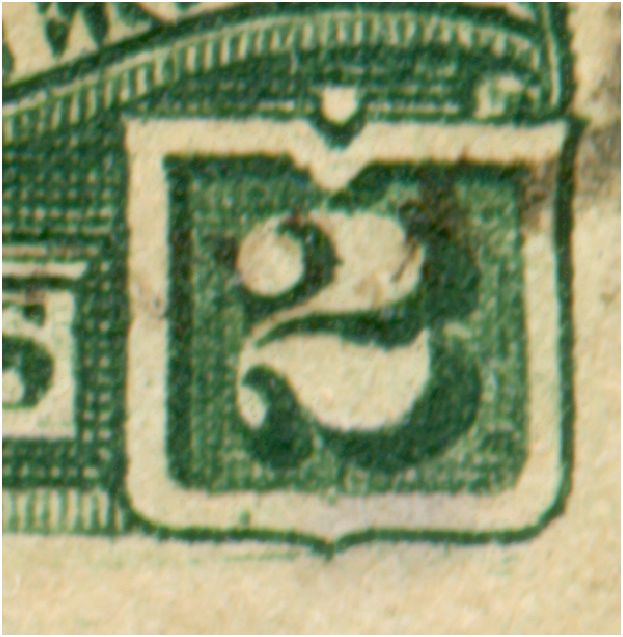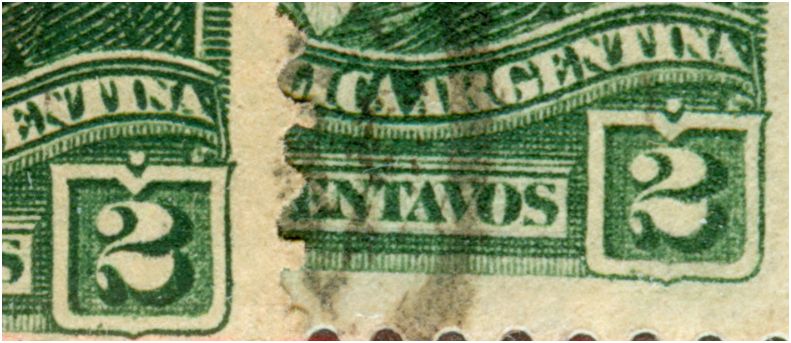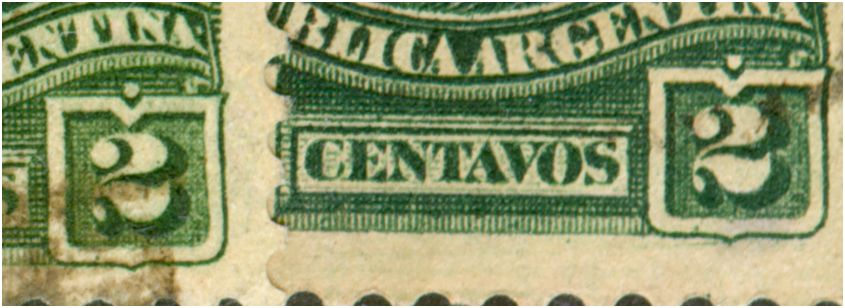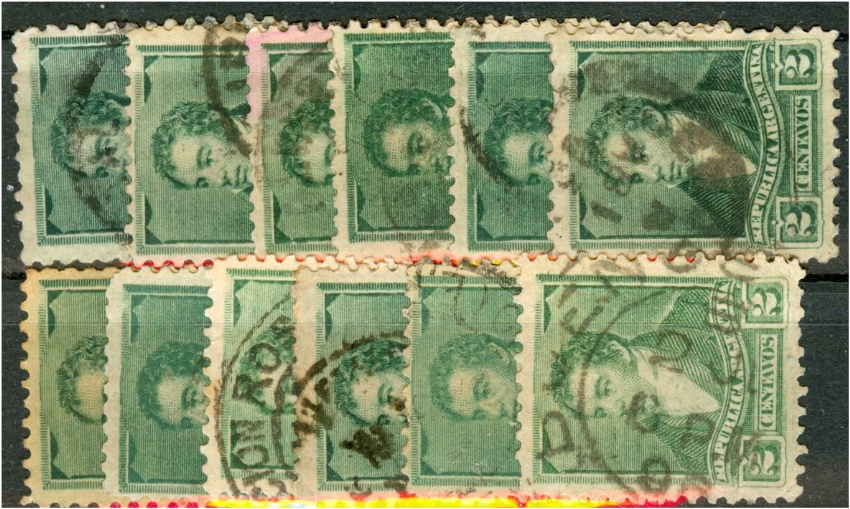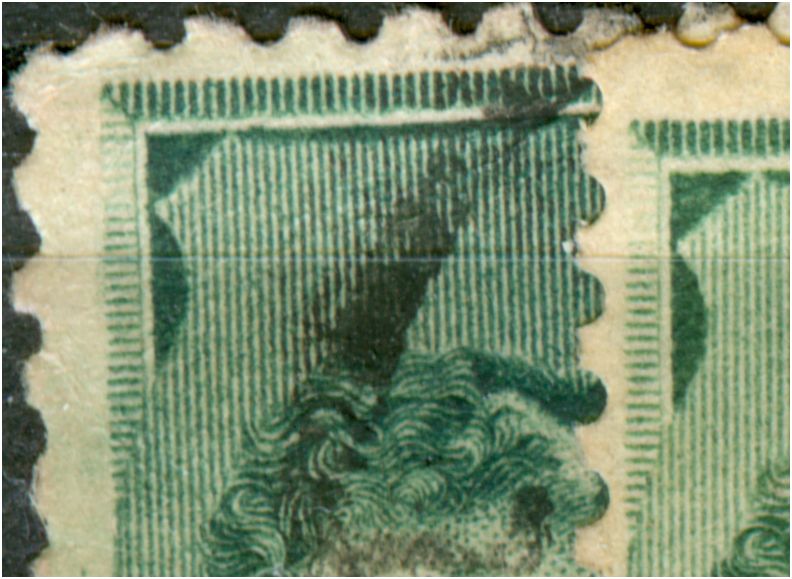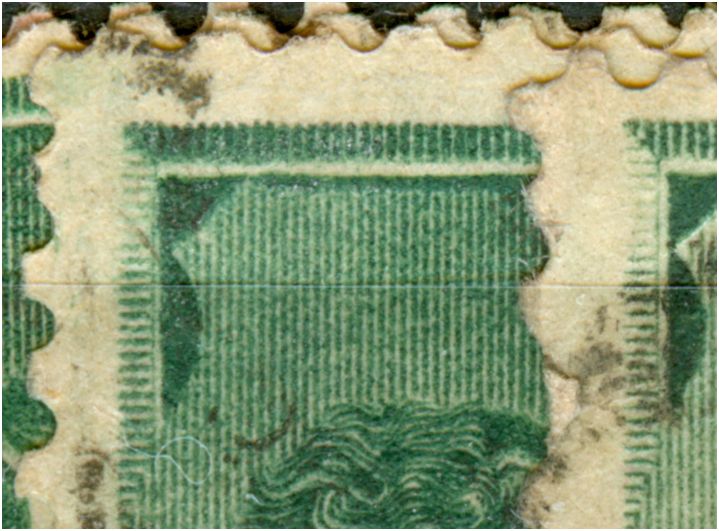Página 1 de 1
1892 Revisited
Publicado: 24 May 2010 05:06
por Rein
In 1892 a new defintives series was introduced in recess printing made by the Compañía Sudamericana de Billetes de Banco. They use paper manufactured by the Zárate paper mills. Paper without a watermark, but with a controll-mark pressed into the paper!
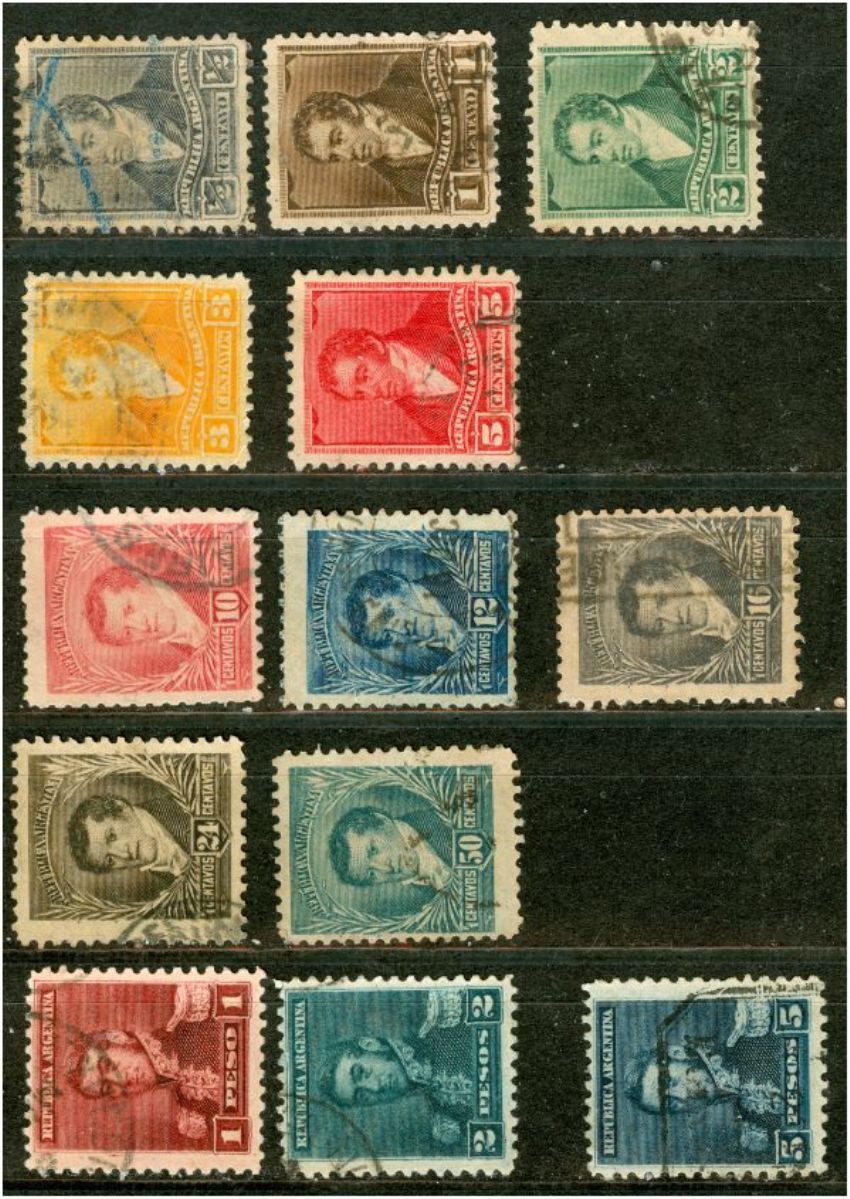
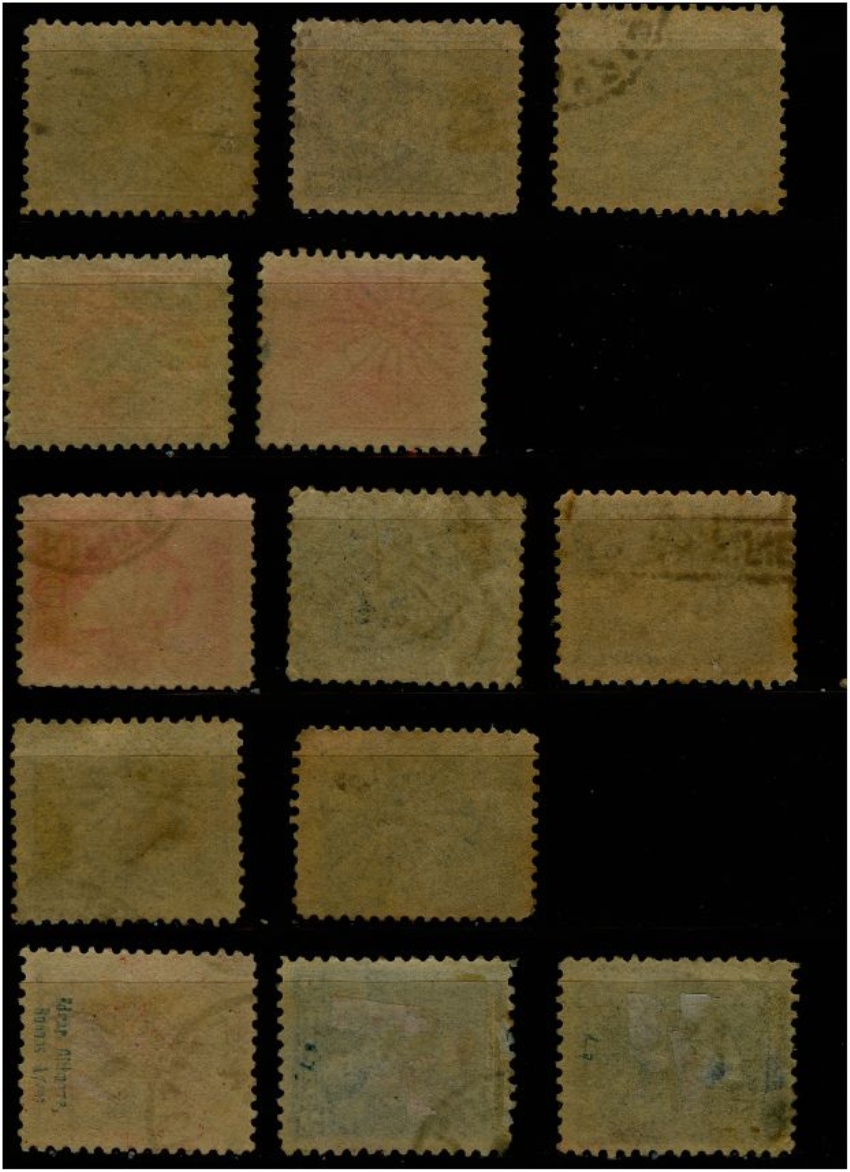
The controll-mark was referred to by Argentinean philatelsits as "sol chico" - a small sun - as opposed the later introduced real watermark with a larger sun!
Re: 1892 Revisited
Publicado: 24 May 2010 05:12
por Rein
In 1896 paper was imported from Germany - at least the paper got referred to by "Aleman":
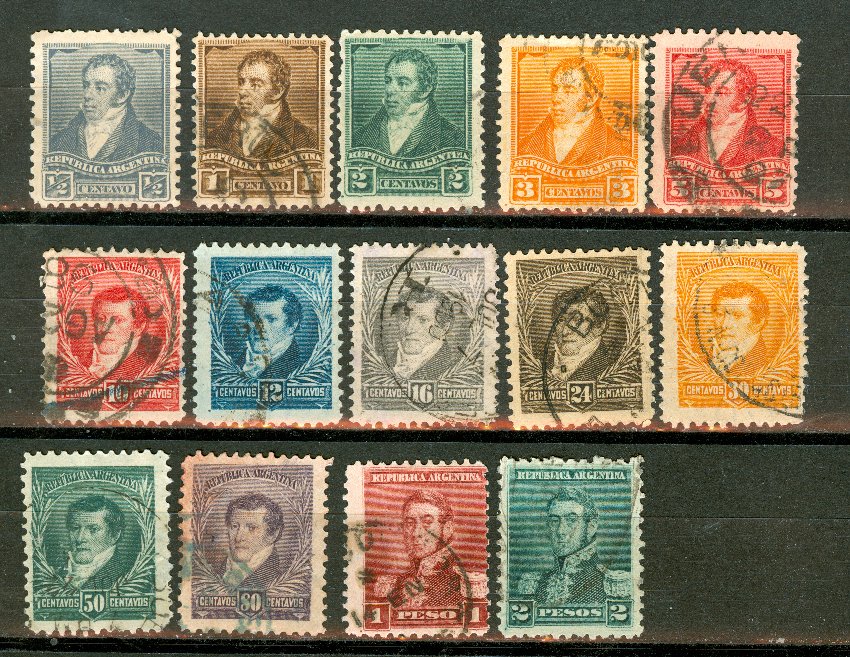
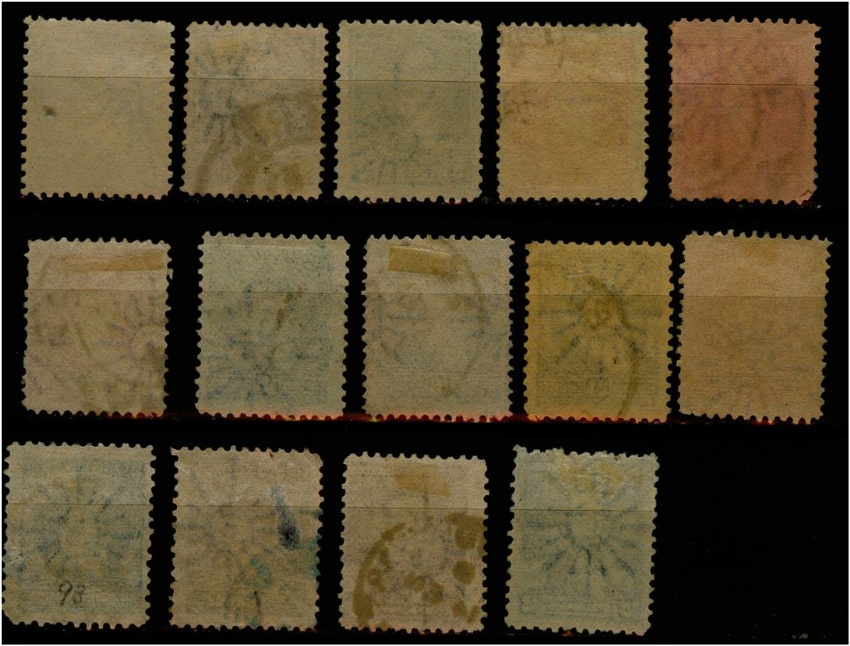
This time a real watermark referred to by Argentinean philatelists as "sol grande" - a large sun - was used.
The important difference - apart from the Suns - was the changed direction of paper. Horizontal for the 1892 printng, vertical for the 1896 and later printings!
rc2302
Re: 1892 Revisited
Publicado: 24 May 2010 05:30
por Rein
The watermarks:
5c:
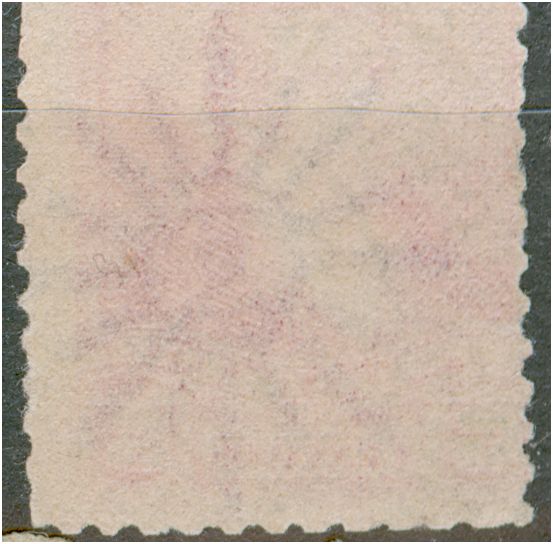
12c
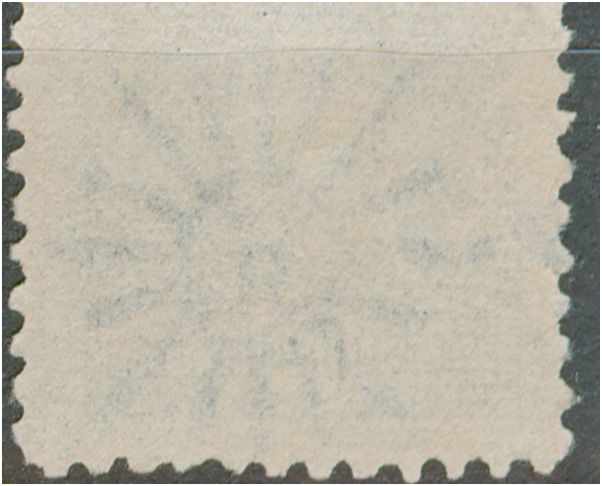
The controll marks:
5c:
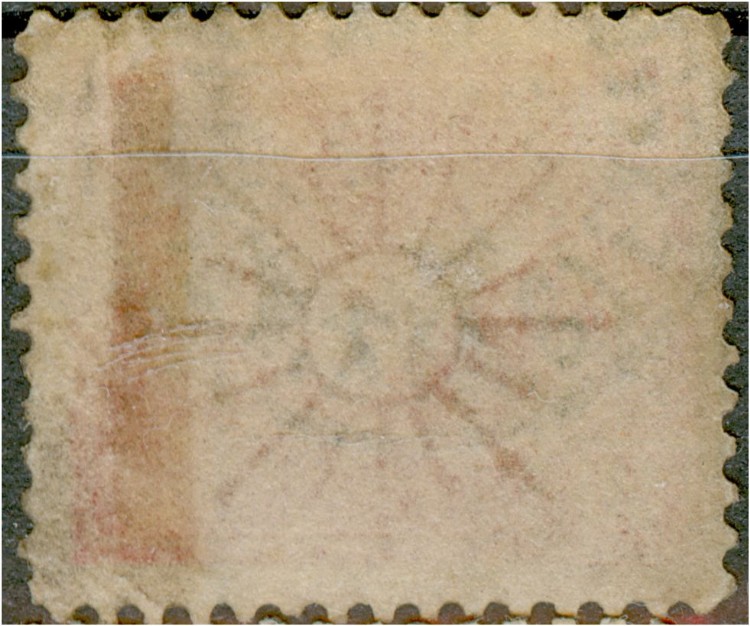
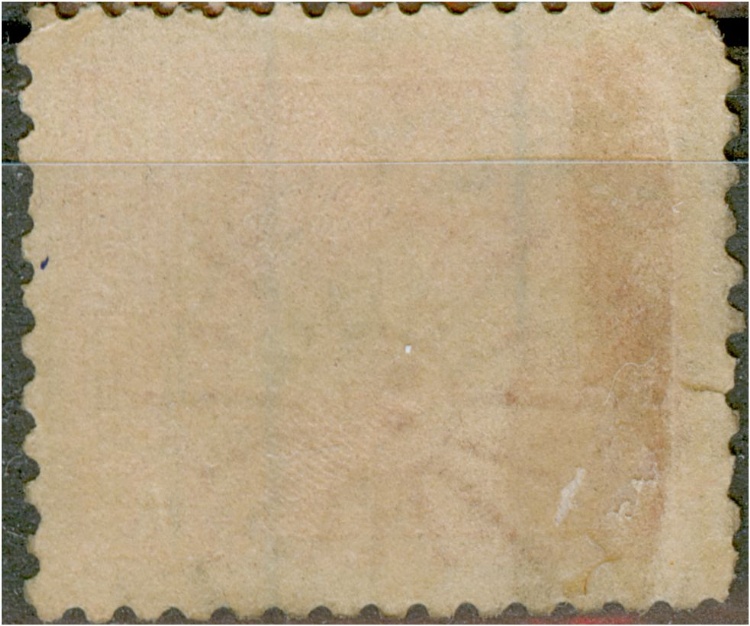
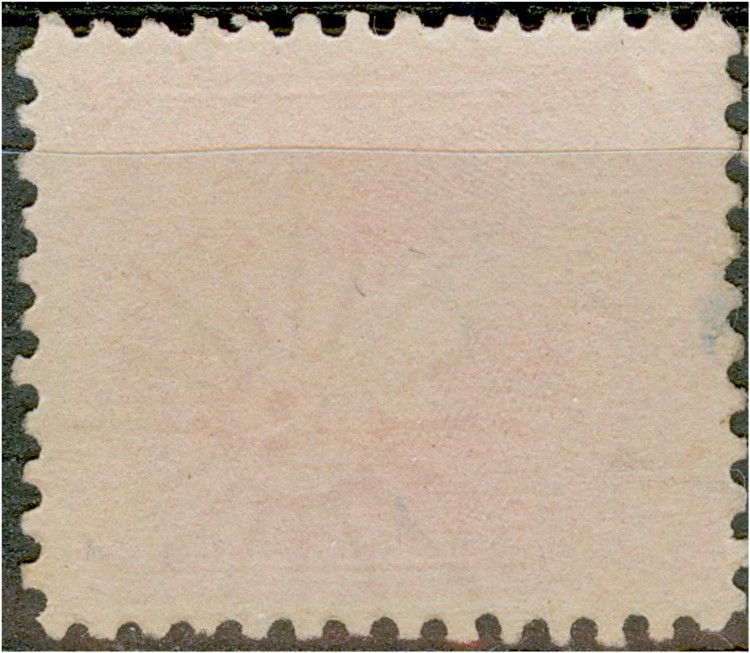
50c:
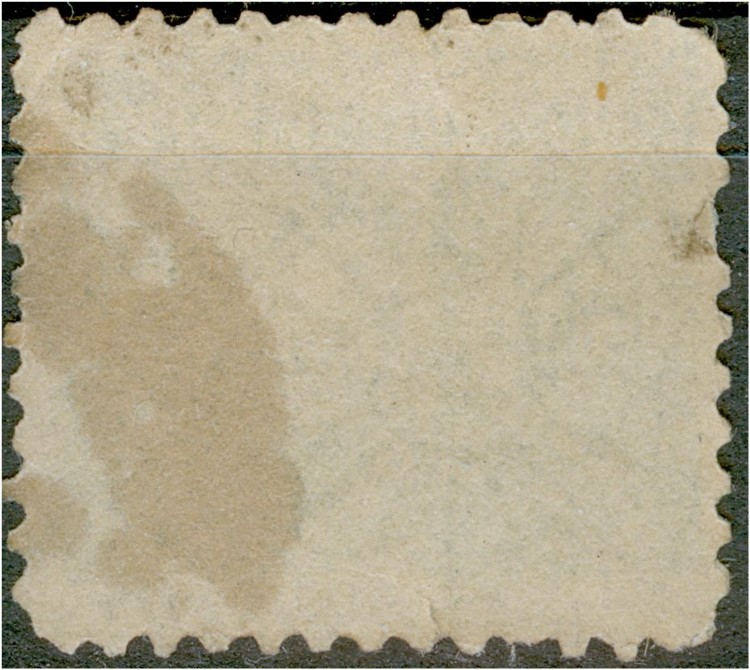
Re: 1892 Revisited
Publicado: 24 May 2010 05:37
por Rein
The 1892 series had been printed in recess and to facilitate the transfer-roll overbringing of the design on the plates special target dots had been made first before the transfer of the individual stamps:
for the 3c:
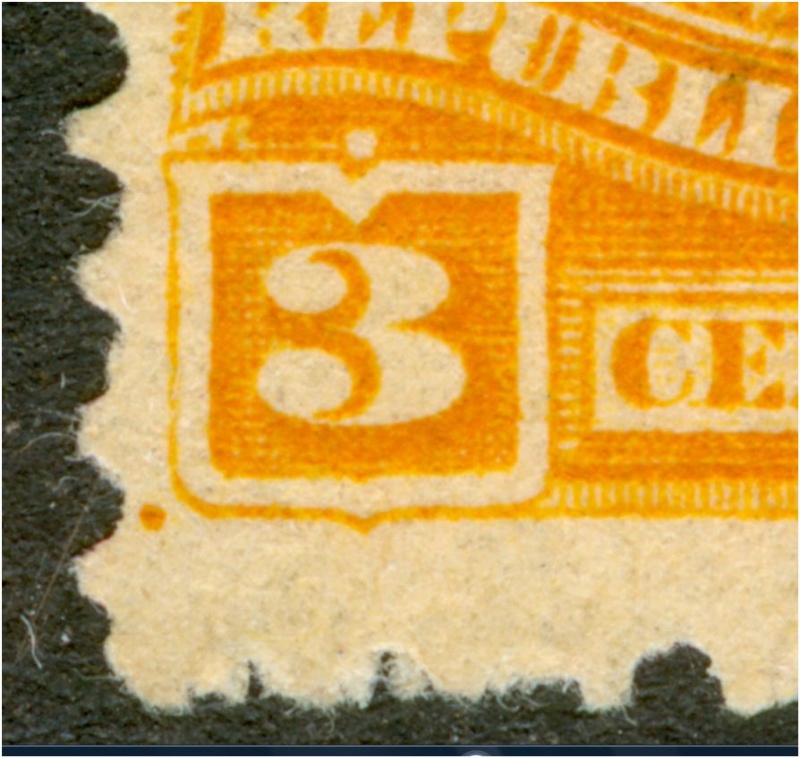
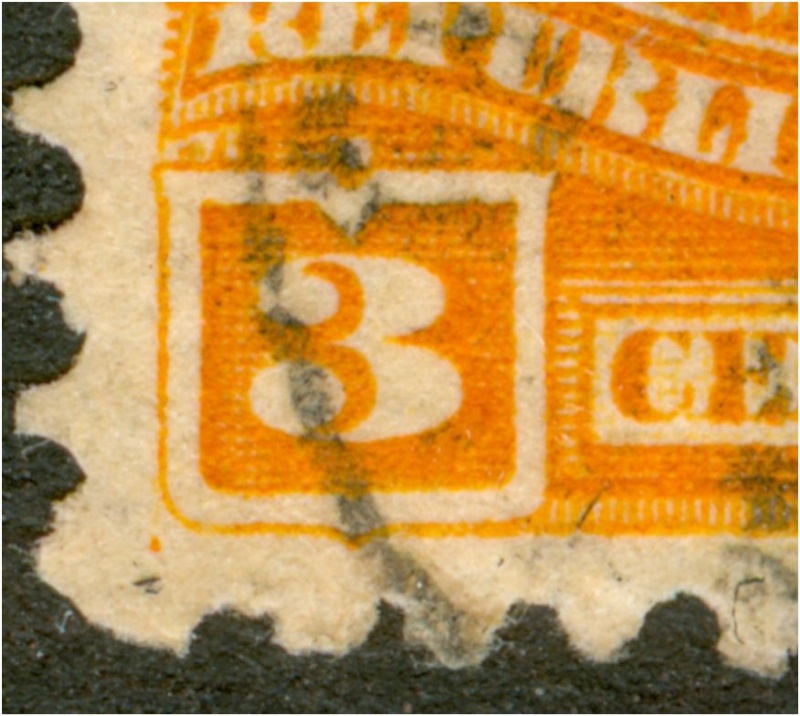
for the 5c, but not always is the dot present:
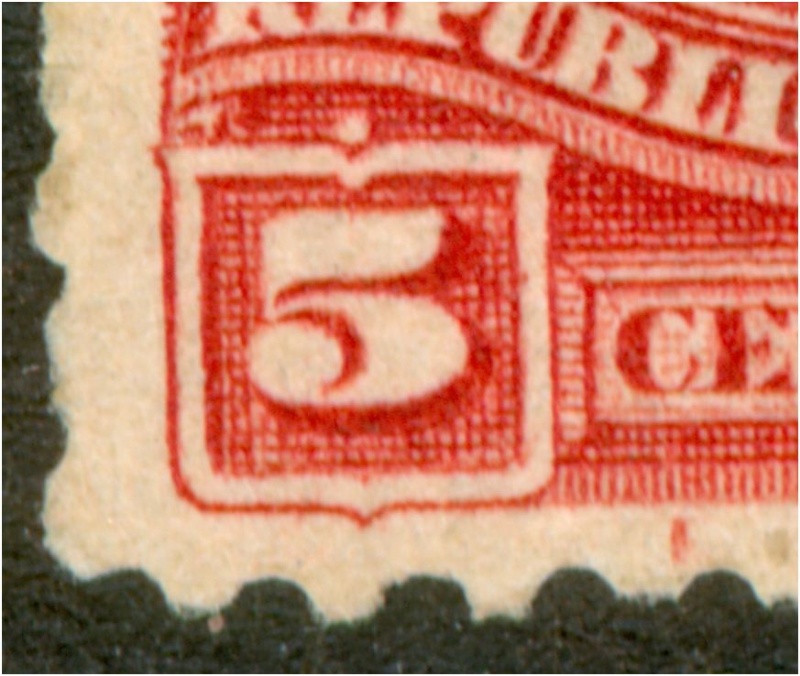
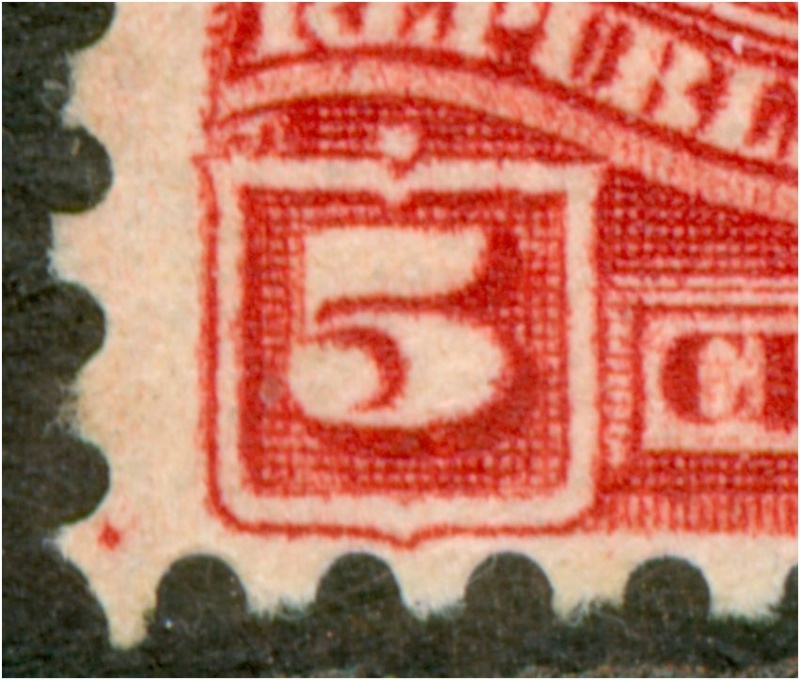
Re: 1892 Revisited
Publicado: 24 May 2010 05:40
por Rein
All the other values can be found with guiding dots in the same corner!
rc2305
Re: 1892 Revisited
Publicado: 24 May 2010 05:43
por Rein
Re: 1892 Revisited
Publicado: 24 May 2010 05:46
por Rein
Re: 1892 Revisited
Publicado: 24 May 2010 05:51
por Rein
The stamps with watermark started with a weak top right corner!
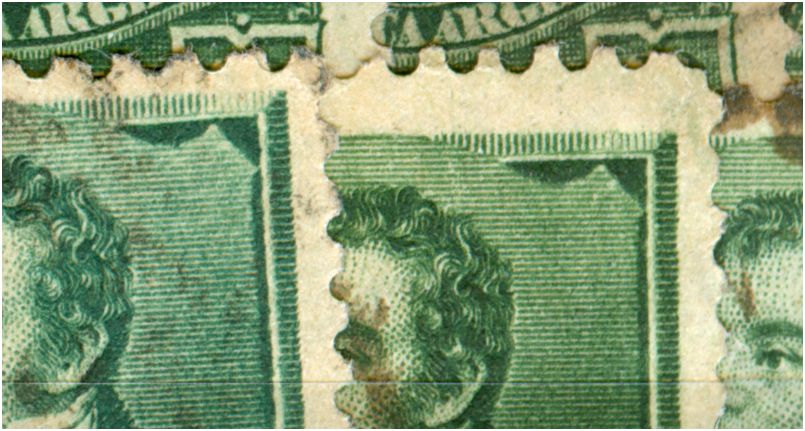
and later on had a strong frame!
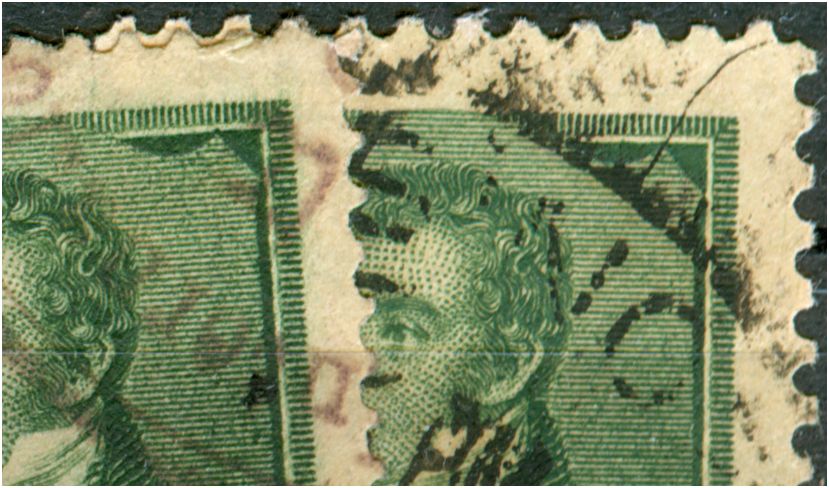
In fact we can speak of 2 [TWO] different types of the 2c!
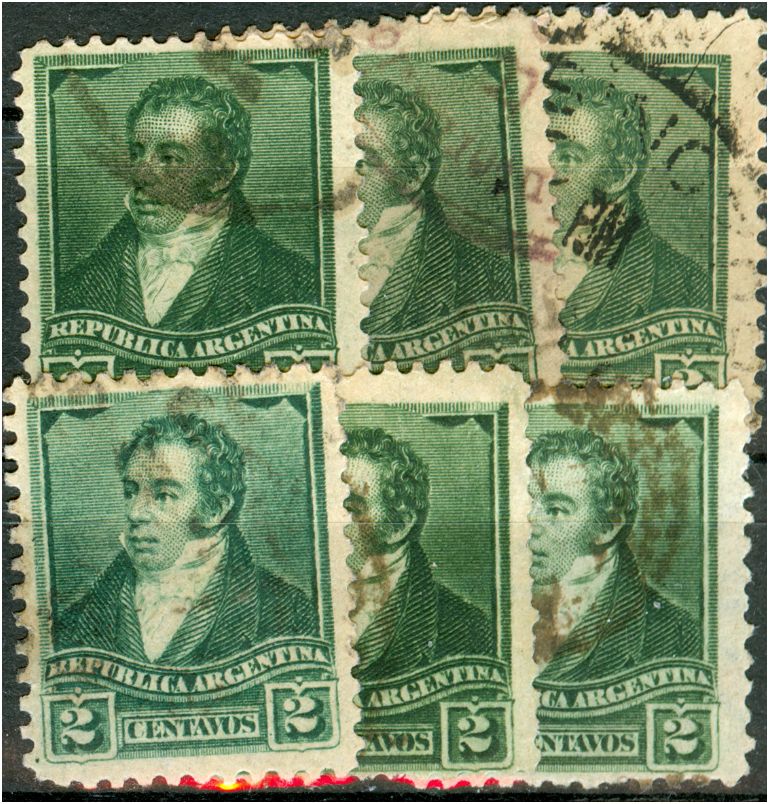 rc2308
rc2308
Re: 1892 Revisited
Publicado: 24 May 2010 23:04
por ntrm
Rein, are u talking about this difference??
2c-rein.jpg
Martin
Re: 1892 Revisited
Publicado: 25 May 2010 04:32
por Rein
ntrm escribió:Rein, are u talking about this difference??

Martin
Martin,
NO!
The weak area in the frame is NOT accidental! It is a mistake made in the processing of the original engraving!
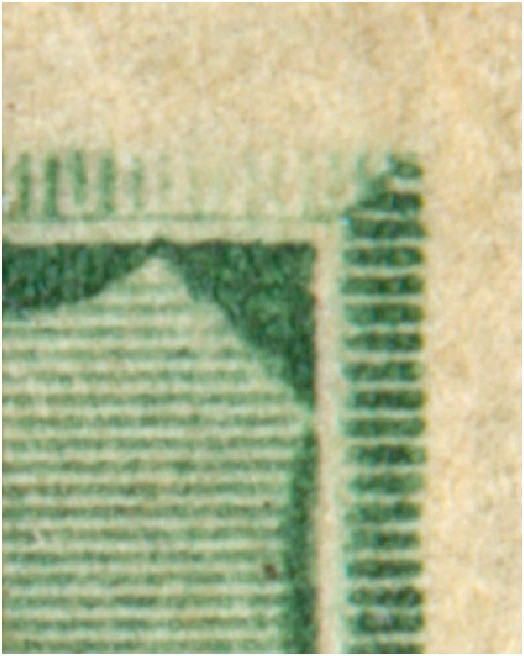
After 4 years - in 1896 or later it got amended!!!!
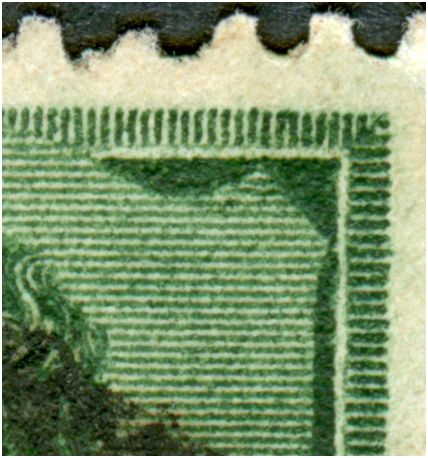
Re: 1892 Revisited
Publicado: 25 May 2010 12:16
por ntrm

Thanks Rein!!! I did not realize what you was talking about...
Martin
Re: 1892 Revisited
Publicado: 25 May 2010 12:38
por Rein
ntrm escribió:
Thanks Rein!!! I did not realize what you was talking about...
Martin
Martin,
I am curious whether you find a lot of stamps with the weak top frame! And how the proportion will be in numbers - controll mark [chico] vs watermark [grande]!?
rc2310
Re: 1892 Revisited
Publicado: 25 Ene 2011 08:53
por Rein
ernesto » 14 May 2009 23:54 escribió:Hola
Estaba chusmeando en un sitio de ventas, y encontré esto:

Lo anuncian como pruebas no adoptadas.
No es algo que me interese, pero me llamó la atención. ¿Son buenos?
Saludos
Ernesto
Rein » 15 May 2009 05:51 escribió:
The Nederlandsche Rotogravure Maatschappij had been active in preparing photogravure stamps both with and without screen. They were in close cooperation with the German printing press manufacturers Goebel AG in Darmstadt. I would not be suprised that these stamps - very similar to the ones I have in the NRM archives in Leiden, The Netherlands, originate from the period round 1930. The photogravure stamps without screen were to be nearly identical to recess-printed stamps. GOEBEL was also responsible for the press with which the first stamps were printed in photogravure by the State Printing Works in Rome.... And the first photogravure stamps for South Africa!!
The German word "muster" also points out to the German machine manufacturer...
ntrm » 16 May 2009 21:19 escribió:
Adjunto una de las pruebas con filigrana hecha en el año 1932? por el Instituto Poligrafo dello Stato en Roma.

Martin
Rene.Jacobsohn » 29 Jun 2009 13:52 escribió:
Martin, VK dice que existen pruebas de dos empresas: 1) Insituto Poligrafico de Roma y 2) de Harrison & Sons. Supongo que estas muestras impresas en offset tienen su origen en Roma, el sello con filigrana que parece grabado entonces seria un producto de Harrison. Ambos deben haber aparecidos en los anos 30 y probablemente sirvieron como muestras, quiza impresas por Göbel, para fomentar las ventas. Un cordial saludo,
René
to be continued ...
Re: 1892 Revisited
Publicado: 25 Ene 2011 08:53
por Rein
The Nederlandsche Rotogravure Maatschappij had been active in preparing photogravure stamps both with and without screen. They were in close cooperation with the German printing press manufacturers Goebel AG in Darmstadt. I would not be suprised that these stamps - very similar to the ones I have in the NRM archives in Leiden, The Netherlands, originate from the period round 1930. The photogravure stamps without screen were to be nearly identical to recess-printed stamps. GOEBEL was also responsible for the press with which the first stamps were printed in photogravure by the State Printing Works in Rome.... And the first photogravure stamps for South Africa!!
The German word "muster" also points out to the German machine manufacturer...
Having the brown stamps myself now I can clearly they are printed in the secret method of the NRM - photogravure without a screen - the poor man's recess! The diagonal lines in the corners are typical for that process - see all the South African unscreened photogravure stamps of the 1930-1948 period.
There is no offset involved as Rene Jacobsohn suggests!
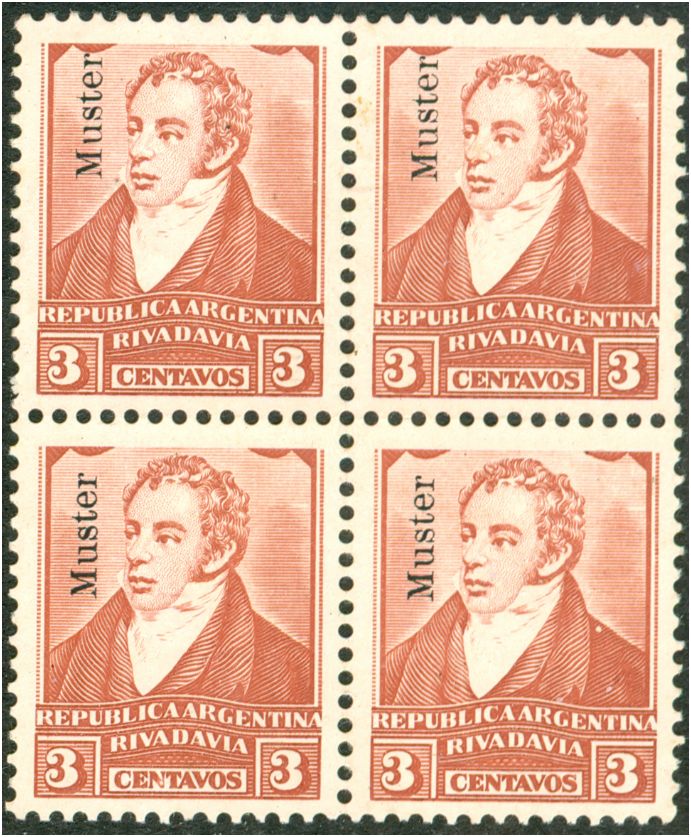
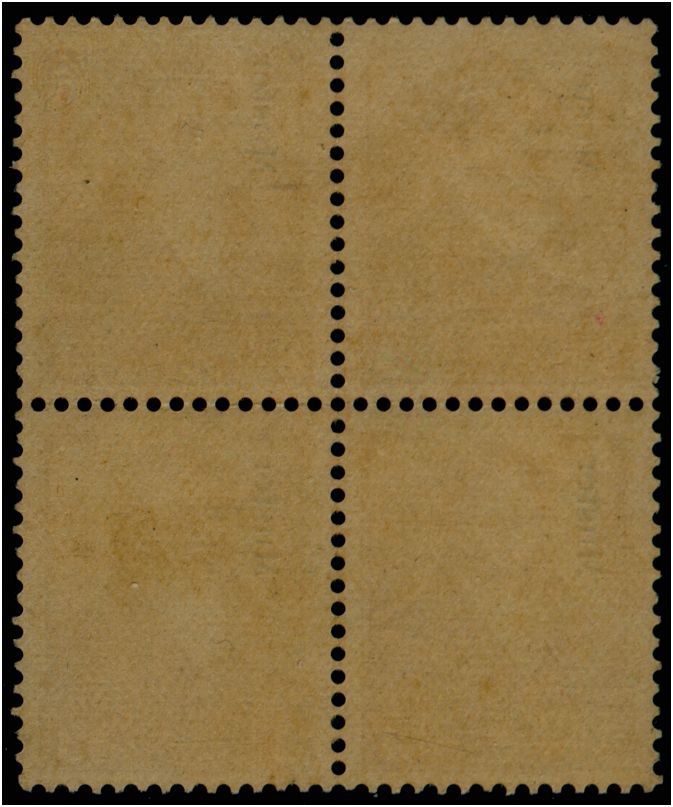
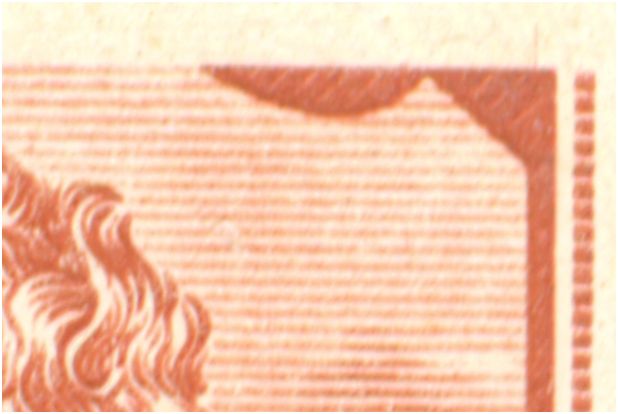
to be continued .....

















